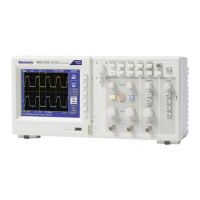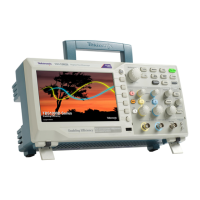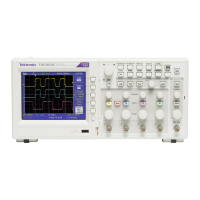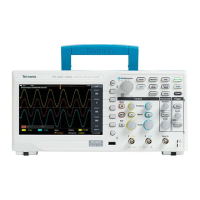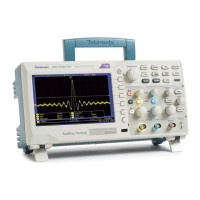FFT aliasing
Problems occur when the oscilloscope acquires a time-domain waveform
containing frequency components that are greater than the Nyquist frequency.
See Nyquist frequency on page 54. The frequency components that are above the
Nyquist frequency are undersampled, appearing as lower frequency components
that "fold back" around the Nyquist frequency. These incorrect components are
called aliases.
Eliminating aliases
To eliminate aliases, try the following remedies:
■
Turn the Horizontal Scale (seconds/division) knob to set the sample rate to a
faster setting. Since you increase the Nyquist frequency as you increase the
sample rate, the aliased frequency components appear at their proper
frequency. If too many frequency components are shown on the screen, you
can use the FFT Zoom option to magnify the FFT spectrum.
■
If you do not need to view frequency components above 20 MHz, set the
Bandwidth Limit option to On.
■
Put an external filter on the source signal to bandwidth limit the source
waveform to frequencies below that of the Nyquist frequency.
■
Recognize and ignore the aliased frequencies.
■
Use zoom controls and the cursors to magnify and measure the FFT
spectrum.
FFT
58 TBS1000B and TBS1000B-EDU Series Oscilloscopes User Manual
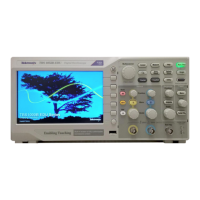
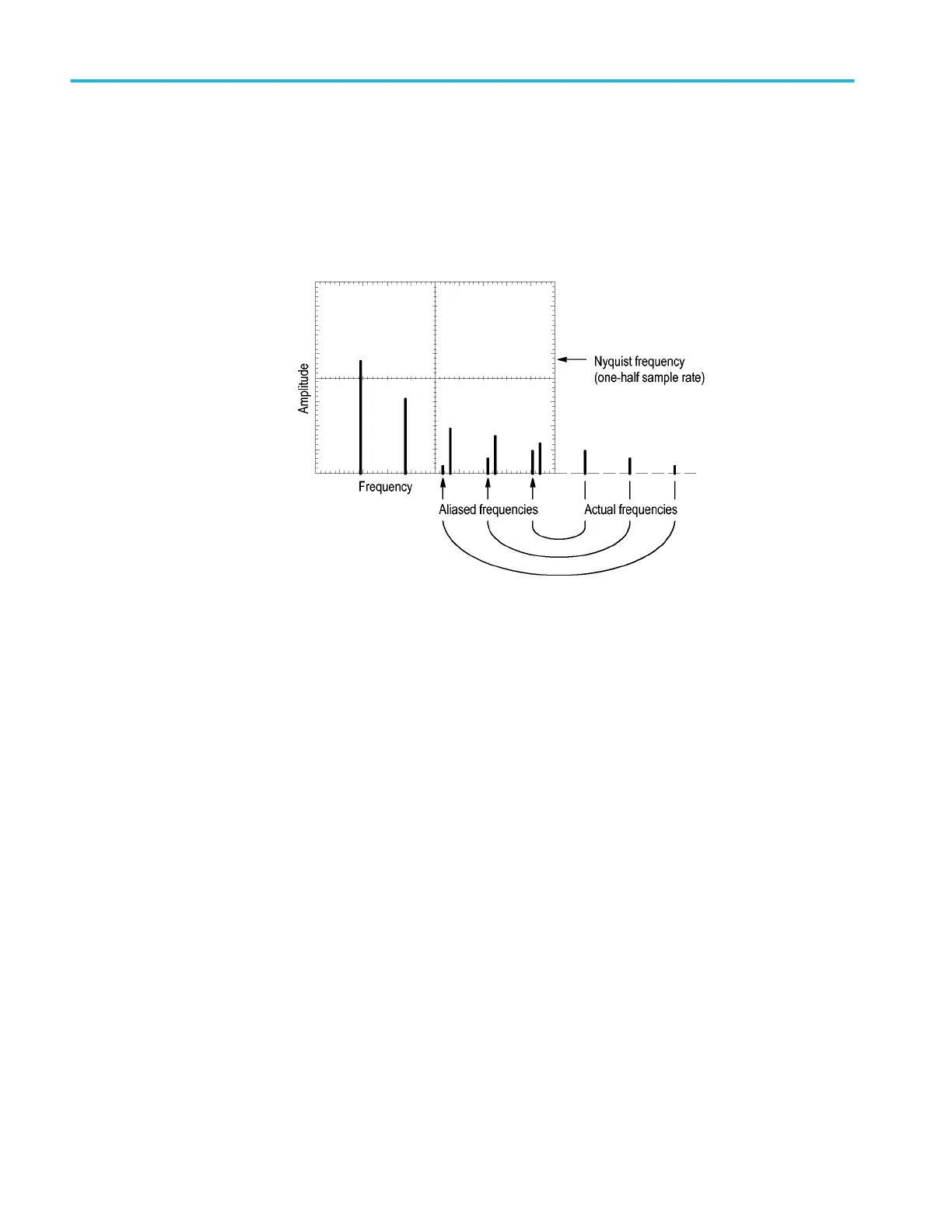